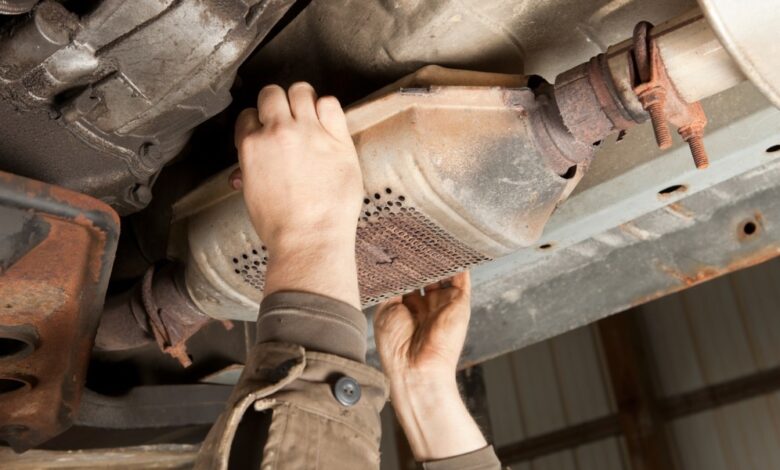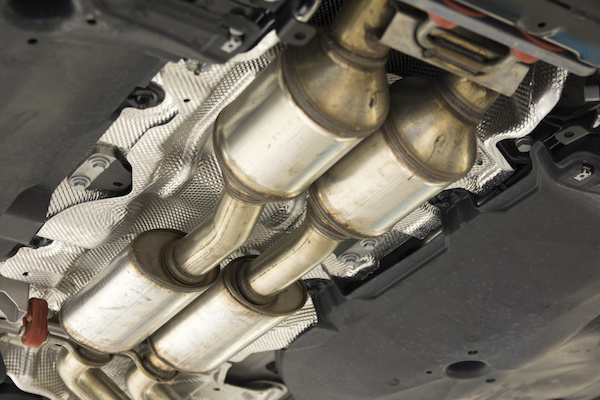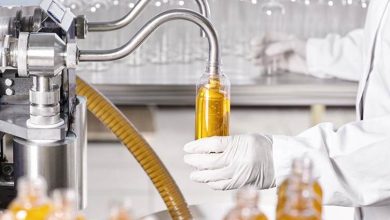When is it Required to Replace or Clean a CAT Converter?

Catalytic converters (CATs) play a crucial role in reducing harmful emissions from vehicles, ensuring compliance with environmental regulations. Over time, however, a CAT converter may become clogged or inefficient, necessitating either CAT cleaning or CAT replacement. But how do you determine when it’s time for maintenance or a complete replacement? This article explores the signs, causes, and solutions for dealing with a failing catalytic converter.
Understanding the Role of a Catalytic Converter
A catalytic converter is an essential component of a vehicle’s exhaust system. It transforms harmful pollutants such as carbon monoxide, nitrogen oxides, and hydrocarbons into less harmful gases like carbon dioxide and water vapour. This process is critical for meeting emissions standards and maintaining a car’s efficiency.
However, due to exposure to extreme temperatures, contaminants, and general wear and tear, a catalytic converter can become clogged or damaged over time. This leads to performance issues, higher emissions, and potential MOT failures.
When is CAT Cleaning Required?
In some cases, a blocked or inefficient catalytic converter can be restored through CAT cleaning, a cost-effective alternative to replacement. Here are some scenarios where cleaning might be the best solution:
1. Reduced Fuel Efficiency
A decrease in miles per gallon (MPG) can indicate a partially blocked CAT converter. The engine has to work harder, consuming more fuel due to increased exhaust backpressure.
2. Check Engine Light Activation
A check engine light can illuminate due to various reasons, including a failing catalytic converter. A diagnostic scan will reveal whether the CAT is causing the issue, and if so, a cleaning treatment may restore its function.
3. Poor Acceleration or Power Loss
If you notice sluggish acceleration or a lack of power when pressing the accelerator, the catalytic converter could be restricting exhaust flow. In some cases, a CAT cleaning service can help restore lost performance.
4. Sulphur or Rotten Egg Smell
A clogged CAT converter can cause fuel to burn inefficiently, resulting in a strong sulphuric or rotten egg-like smell from the exhaust. If caught early, a professional CAT cleaning can resolve the issue.
5. Failed Emissions Test
If your vehicle fails an emissions test, the cause could be a dirty or clogged catalytic converter. Rather than opting for an expensive replacement immediately, a CAT cleaning may help your car meet emission standards.
When is CAT Replacement Necessary?
While CAT cleaning is beneficial in many cases, there are situations where a catalytic converter is beyond repair and must be replaced. Here’s when CAT replacement is the only viable option:
1. Complete Blockage or Melting
If the catalytic converter is completely blocked or has melted due to overheating, no amount of cleaning will restore it. This usually occurs due to unburnt fuel entering the CAT, causing excessive temperatures that melt the internal honeycomb structure.
2. Rattling Noises from the Exhaust
A metallic rattling sound coming from the undercarriage of your vehicle could indicate that the internal components of the catalytic converter have broken apart. This is a clear sign that CAT replacement is required.
3. Persistent Engine Misfires
Frequent engine misfires can introduce raw fuel into the CAT converter, leading to overheating and irreversible damage. If left unaddressed, the CAT will degrade to the point where a full CAT replacement is necessary.
4. Visible External Damage
Cracks, holes, or corrosion on the exterior of the catalytic converter often mean it is no longer functioning correctly. Unlike internal issues that may be resolved with CAT cleaning, visible damage almost always requires a CAT replacement.
5. Failed MOT with Severe Emission Levels
If your vehicle fails an MOT due to excessive emissions, and CAT cleaning does not rectify the issue, then a CAT replacement becomes the only option. MOT failures can be costly, so addressing the problem early is key.
How to Maintain Your Catalytic Converter
Proper maintenance can help prolong the lifespan of your catalytic converter, reducing the need for costly replacements. Here are some best practices:
1. Use High-Quality Fuel
Premium fuels often contain detergents that help keep the CAT clean and free from carbon build-up.
2. Regular Servicing
Routine servicing ensures that issues such as faulty oxygen sensors or misfiring spark plugs, which can damage the CAT, are detected early.
3. Avoid Short Journeys
Short trips prevent the CAT from reaching its optimal operating temperature, leading to carbon build-up. Whenever possible, allow your car to warm up fully during longer drives.
4. Address Engine Issues Promptly
Problems such as oil or coolant leaks, worn-out spark plugs, or a malfunctioning fuel injection system can all contribute to CAT damage if left unattended.
The Verdict: CAT Cleaning or CAT Replacement?
Determining whether to opt for CAT cleaning or CAT replacement depends on the severity of the issue. If your catalytic converter is only mildly clogged, professional CAT cleaning can restore performance and help your car pass an emissions test. However, if the converter is physically damaged, melted, or completely blocked, CAT replacement is the only solution.
If you’re experiencing any of the symptoms mentioned above, seek professional advice from a trusted mechanic. Addressing catalytic converter problems early can save you money, improve fuel efficiency, and ensure your vehicle remains road-legal.
By staying proactive with your car’s maintenance, you can extend the life of your catalytic converter and avoid unexpected repair costs. Whether it’s CAT cleaning or CAT replacement, making the right decision will keep your vehicle running smoothly and efficiently for years to come.





